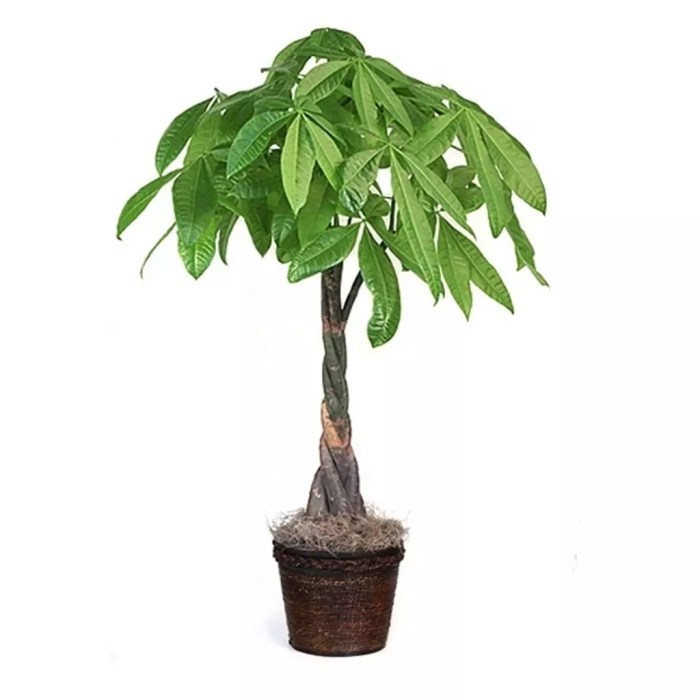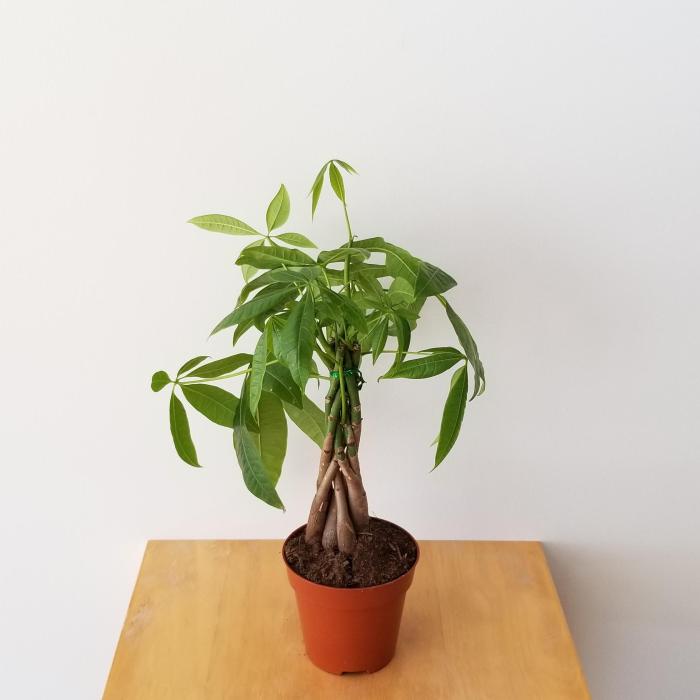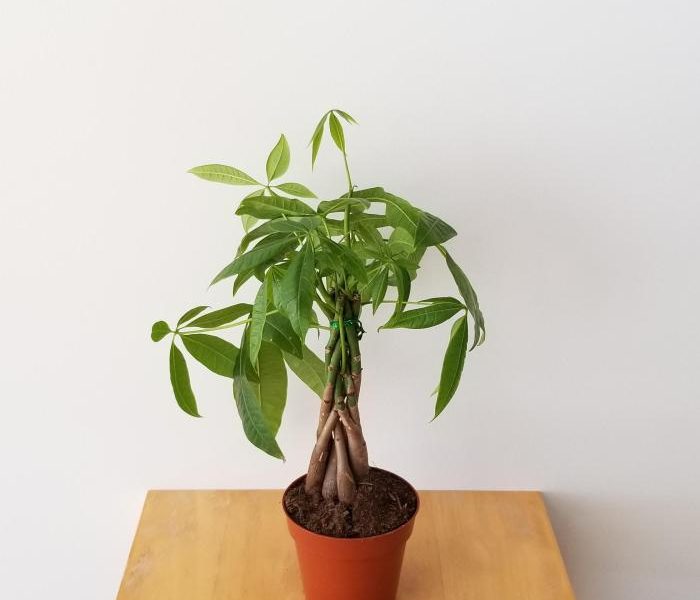The Money Tree Plant A Comprehensive Guide
Care and Maintenance: The Money Tree Plant

The money tree plant – Keeping your Money Tree thriving involves understanding its specific needs. This section details best practices for watering, soil composition, pest and disease management, and creating a suitable environment for your plant. Proper care will ensure a healthy, long-lasting Money Tree that brings joy to your home.
Watering Practices
Proper watering is crucial for a Money Tree’s health. Overwatering is a common problem, leading to root rot. The best approach is to let the soil dry out somewhat between waterings. Check the soil moisture by inserting your finger about an inch into the soil; if it feels dry, it’s time to water. Water thoroughly until water drains from the drainage holes, then discard any excess water from the saucer.
The frequency of watering will depend on factors like pot size, soil type, temperature, and humidity; generally, watering every 1-2 weeks is a good starting point, adjusting as needed based on your plant’s specific environment. Avoid letting the plant sit in standing water.
Soil Composition and Fertilization
Money Trees prefer well-draining soil that prevents waterlogging. A good soil mix would consist of a combination of potting soil, perlite, and orchid bark. This combination ensures good drainage and aeration. Fertilizing is best done during the growing season (spring and summer) using a balanced liquid fertilizer diluted to half strength. Fertilize every 2-4 weeks.
Avoid fertilizing during the dormant season (fall and winter) as the plant’s growth slows down significantly. Over-fertilization can harm the plant.
Pest and Disease Management
Money Trees are relatively resistant to pests and diseases, but they can still be affected. Common pests include spider mites and mealybugs. Spider mites are tiny arachnids that cause stippling on leaves. Mealybugs are small, soft-bodied insects that appear as white cottony masses. Both can be controlled with insecticidal soap or neem oil.
Diseases are less common but can include root rot, usually caused by overwatering. Inspect your plant regularly for any signs of infestation or disease. Early detection and treatment are key to preventing serious problems.
The Pachira aquatica, or money tree plant, is known for its braided trunk and purported good fortune. Its lush, vibrant leaves bring a sense of calm, much like the peaceful shade offered by other trees. Indeed, considering the long-term benefits, the wise gardener might also explore the initiative to plant a tree whose shade will benefit future generations.
Returning to our money tree, remember its resilience and beauty reflect the enduring rewards of thoughtful planting and care.
Care Schedule
Maintaining a consistent care schedule is vital for a healthy Money Tree. The plant thrives in bright, indirect light. Avoid direct sunlight, which can scorch the leaves. An ideal temperature range is between 65-80°F (18-27°C). Money Trees tolerate average humidity levels, but they appreciate slightly higher humidity.
Consider grouping it with other plants or using a humidifier, especially during dry winter months. A consistent watering schedule (as discussed above) and fertilization during the growing season will complete the routine.
Styling and Display

The beauty of a Money Tree plant goes beyond its purported financial benefits; it lies in its sculptural form and adaptability to various interior design styles. With a little creativity, you can transform your Money Tree from a simple houseplant into a striking focal point, enhancing the aesthetic appeal of your home. This section will explore various ways to style and display your Money Tree, ensuring it complements your personal décor.
Creative Styling Ideas for Money Trees in Different Interior Spaces, The money tree plant
The versatility of the Money Tree allows for creative placement in diverse settings. In a minimalist space, a single, elegantly braided Money Tree in a sleek, modern pot can serve as a statement piece. Its clean lines and simple form will complement the uncluttered aesthetic. Conversely, in a bohemian setting, a Money Tree can be incorporated into a vibrant display with other plants, macrame hangers, and colorful pottery, adding a touch of natural elegance to the eclectic style.
Consider placing a Money Tree in a sun-drenched corner of a traditional home, letting its lush foliage contrast with classic furniture. In a contemporary space, a Money Tree in a geometric pot can add a touch of organic texture to a sleek environment.
Money Tree Plants in Various Home Décor Styles
- Minimalist: A single, tall Money Tree in a simple, ceramic pot, perhaps on a clean, white stand, would emphasize the plant’s natural elegance and enhance the minimalist aesthetic.
- Bohemian: A Money Tree placed in a woven basket, surrounded by other plants and colorful textiles, adds a touch of natural vibrancy to the eclectic bohemian style.
- Modern Farmhouse: A Money Tree in a rustic terracotta pot, positioned on a wooden shelf alongside other greenery, complements the rustic-chic style of a modern farmhouse.
- Mid-Century Modern: A Money Tree in a mid-century-inspired pot with clean lines and a neutral color palette blends seamlessly with the sleekness of mid-century modern decor.
Braiding a Money Tree Trunk: A Step-by-Step Guide
Braiding a Money Tree trunk enhances its visual appeal and creates a unique, sculptural element. It’s best done when the plant is relatively young and the trunks are still pliable. Here’s a step-by-step guide:
- Preparation: Gently loosen the soil around the base of the plant to expose the lower trunks. Carefully separate the three main trunks.
- Braiding: Begin braiding the three trunks together, much like braiding hair. Securely tie the braided section with soft twine or garden tape.
- Support: Use a stake or support to help maintain the braided shape, especially while the plant is still adjusting.
- Maintenance: Regularly check the braid for tightness and adjust as needed. Avoid over-tightening, which could damage the trunks.
Distinct Money Tree Plant Arrangements
The following table showcases three distinct Money Tree arrangements, highlighting the pot, supporting elements, and overall aesthetic.
| Plant Name | Pot Type | Supporting Elements | Description |
|---|---|---|---|
| Pachira aquatica (Money Tree) | Sleek, black ceramic pot | None | A minimalist arrangement showcasing the plant’s natural form. The black pot provides a striking contrast to the green foliage. |
| Pachira aquatica (Money Tree) | Woven seagrass basket | Driftwood, small succulents | A bohemian-inspired arrangement, combining the Money Tree with other elements to create a textured, layered display. |
| Pachira aquatica (Money Tree) | Terracotta pot with a saucer | Pebbles, decorative moss | A rustic arrangement that highlights the plant’s natural beauty. The terracotta pot and natural elements create a warm, earthy feel. |
FAQ Insights
Is the Money Tree plant toxic to pets?
While not highly toxic, ingestion of Money Tree leaves can cause mild gastrointestinal upset in pets. Keep it out of reach of curious animals.
How often should I rotate my Money Tree plant?
Regularly rotating your Money Tree (every few weeks) ensures even light exposure and prevents uneven growth.
Can I propagate a Money Tree plant from seeds?
Yes, but propagation from cuttings is generally more successful and quicker.
What is the best time of year to repot a Money Tree plant?
Spring is the ideal time to repot, as this coincides with the plant’s active growth period.

